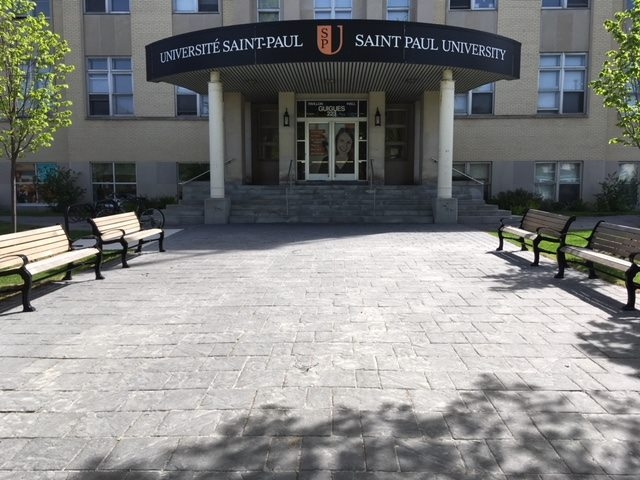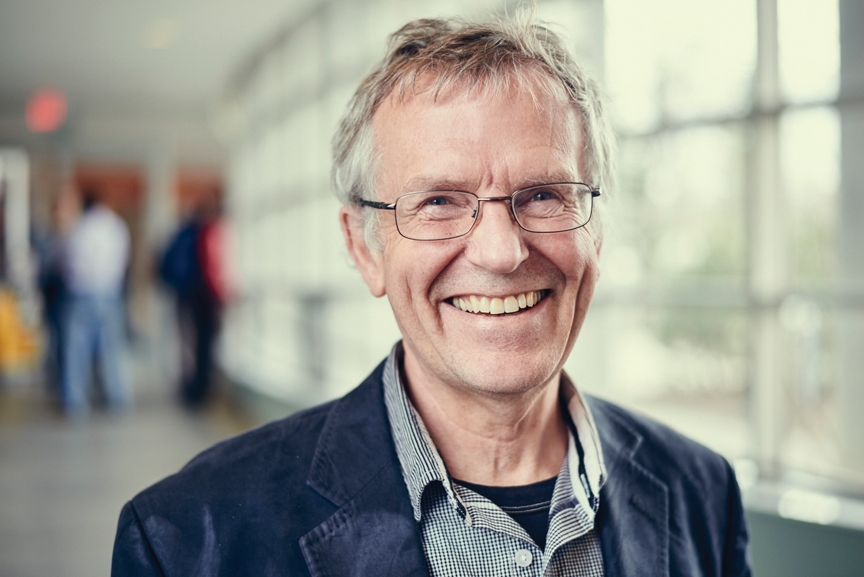
Saint Paul University: 170 years of dedication to academic learning, pushing the boundaries in education and inspiring young minds to “be the face of change”.
By: Daniel Hurtubise, assistant archivist at Saint Paul University
When reflecting on our history, we must mention the important role played by the University of Ottawa, the St. Joseph Scholasticate and the Saint Paul University Seminary.
The story of Saint Paul University begins in 1848, when Fr. Joseph-Eugène-Bruno Guigues, the first bishop of the Diocese of Bytown (Ottawa), founded the area’s first bilingual college, the College of Bytown, and opened it to some 60 young men.
The Missionary Oblates of Mary Immaculate were entrusted with its management in the hope of bringing faith, mutual understanding and communication to a community marred by poverty and unrest due to its Irish immigrant and French-Canadian communities competing for jobs in the timber industry.
The college grew quickly; in 1866, it was granted a civil charter, followed by a pontifical charter in 1889.
When Bytown’s name was changed to Ottawa, the college wanted its name to reflect that of the city; therefore, it became the College of Ottawa.
The approval of a rewritten civil charter in 1933 led to the institution being officially known as the University of Ottawa. The oldest and largest bilingual post-secondary institution in Canada, the University of Ottawa has grown steadily and is now ranked one of Canada’s top universities.
Located in Archville (Ottawa East) and dating back to 1885, the St. Joseph Scholasticate, later known as the Deschâtelets Building, was home to the Missionary Oblates of Mary Immaculate.
It was the first Oblate Scholasticate in North America, as well as being the oldest and largest historical institution in the eastern part of Ottawa. It became the departure point for many young Oblate priests preparing for missionary life around the world.
The Oblates who lived there also served as professors and administrators for both the University of Ottawa and Saint Paul University, until the community moved to Richelieu, Que., in 2014.
Arriving on March 27, 1937, Fr. Jean-Charles Laframboise, accompanied by eight seminarians and designated personnel, entered the newly built Saint Paul University Seminary on Main Street.
It was to serve as the headquarters for the ecclesiastical faculties of the University of Ottawa as well as a training location for future priests.
It became an integral part of Saint Paul University in 1965 and was used as a seminary from 1937 to 2010.
It now houses most of the central administration offices of Saint Paul University.
The University of Ottawa became one of the main institutions of higher learning in Canada. However, this growth was accompanied by increased financial pressures and needs that had to be dealt with to insure its future. Therefore, in 1965, the “old” university disappeared, and two ‘new’ universities came into being.
The first was named Saint Paul University; it retained both its civil and canonical charters.
The second, created by the provincial government of Ontario and named the University of Ottawa, retained most of the land and buildings. The two universities became a federated complex and agreed to share existing faculties and schools.
The ecumenical character of Saint Paul University offers an open environment where all can grow and discover a place in society. Dr. Chantal Beauvais, appointed in 2009 as the university’s first female rector, has inspired a new direction for the university as a spiritual, engaged and human academic institution offering both professional training and teaching.
As a bilingual institution aware of its special mission, the university strives to provide a different student experience as well as contribute to the quality of academic training and Christian culture.
Supported by a dedicated teaching and administrative staff, a renowned library collection and a strong academic success program, it offers students from around the world the customized services they need to succeed in their academic endeavours and to “be the face of change” in a world that is constantly evolving.








